Cam Baity's Blog, page 532
March 7, 2014
BRIGHT AND SHINY!
It has arrived – the advance print of our very first book…
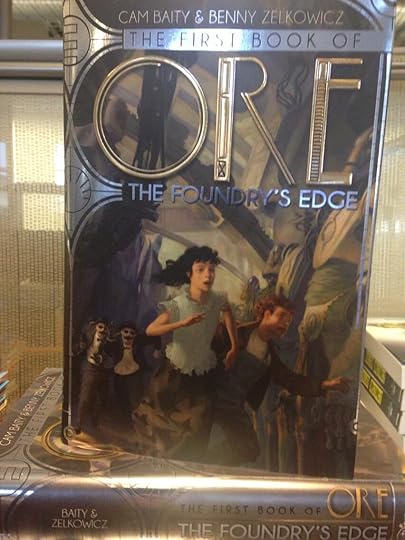
(Gulp.)
All we can say is that we had to put on our sunglasses. Even the good folks at Hyperion said the book was blinding people in the office. When we saw the cover art and the eye-catching graphic design, we were thrilled. Now that everything has come together in this incredible, glimmering package… honestly, we are gobsmacked. And that’s not a word to use casually. If ever.
Along with this amazing object, we received one of the highest compliments we could fathom. And from the influential Kirkus Reviews, no less. Check out the review here..
Not too shabby. More exciting things are starting to bubble up that we can’t wait to announce soon. And mark your calendars for the book release date – Tuesday, April 15th, 2014!
January 30, 2014
Cover Reveal!
Here it is, at long last: the jacket illustration for our debut novel, The Foundry’s Edge!
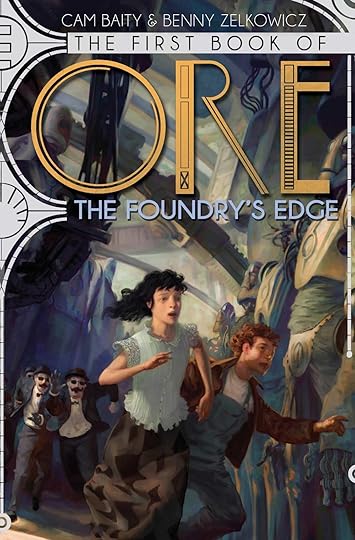
This beautiful painting was done by the exceptionally talented Jon Foster, with the striking graphic design and art direction by Marci Senders. We are thrilled with this piece and are honored to be associated with such top-notch work.
It’s tricky, having a singular image chosen from your story to represent the whole, especially a story such as ours with VERY specific ingredients to the world. We don’t know about you, but this image makes us hungry for more. And just wait until you see the design of the rest of the book – it’s gonna be a very pretty thing!
Only a few more months now –
January 3, 2014
Q&A: Part 2
Q&A – Part 2
Join us as we plunge into another revealing exchange between two collaborators.
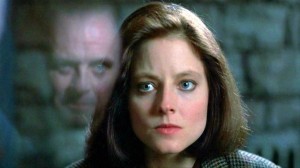
B: So now it’s my turn to take the mic and ask the questions. Last time we were discussing some of the challenges and complexities of world building. I know I covered everything important, but did you have anything to add?
C: Okay, okay! Just calm down – put down the fillet knife, and I’ll talk.
I guess I would just say that the job is never done. Like our own world, fantasy worlds are constantly in flux. It’s easy to assume that just because a book is in black and white that it is set in stone, but it’s crazy when you realize that every written world is truly alive. As anyone who has gone back to re-read a series of books would know, it is never the same place twice. That has its plusses and minuses. The upside is that writing and creating in a make-believe world is like being a kid in a sandbox with infinite possibilities. The downside is that infinite possibilities equals infinite possible mistakes – the rules and logic of the world must be upheld with every new addition and adjustment.
B: And it gets hard to keep track of all the rules and stuff that’s been established. So how about the characters? What would you say has been particularly difficult or rewarding about that development process?
C: Bringing a new character into existence is a lot like parenthood – it is a heart-racing thrill to have brought someone to life, but after that initial high wears off you wonder “So now what?” So you ask them. And then, like a real child, they start talking. And walking. And they make you laugh. And they make you angry. Then, inevitably, you get into a fight, and they stop talking to you. That’s the tough part, when you bend over backwards and do everything you possibly can to reach out to them, but your characters give you the cold shoulder.
B: I think I see where you are going with that– even though we are obviously in control of their fates, it does feel like we discover their motivations and desires, and their actions stem from that, sometimes unexpectedly. I know especially with Goodwin, we were very conscious about trying to avoid cliche “I want to take over the world!” purposes and typically ‘villainous’ tropes.
C: Yes, but it’s important to make sure they are still bad guys. Bucking too hard against the standards can be just as annoying as going full-stereotype. I have a passion for villains, as do all animators. You can take them as far as you want to, and then push them even further, and its okay because they need to be extreme (or at least they need to be capable of it.) Thankfully, this series overfloweth with villainy.
B: But hopefully arising from sympathetic and recognizably human intentions. This raises what I think is the most common question I have been asked – “How do you write a book with someone else?” How do you describe our process to people?
C: I usually say “Partner? What partner? I did this all by myself.”
I guess I would answer by continuing my family metaphor. Having a writing partner is a lot like being married. It’s a commitment that is entirely reliant on one’s ability to communicate and resolve conflict in a productive way. Of course, in a relationship, both parties frequently disagree and want to do things in exactly the opposite way. Then, either you dig your heels in and fight, or you acquiesce and show you are reasonable. Fortunately for me, I have a work wife who tires of fighting easily, so I get my way a lot. Thanks dear!
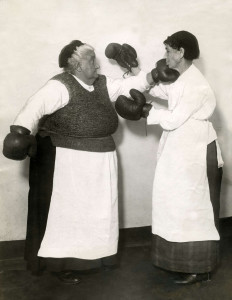
B: Haha. And what would you say are benefits of that way of working?
C: Because the process of writing a book is so all-encompassing (especially one with intensive world-building) it is a huge comfort to have someone else to shoulder the burden with. We both have kids and day jobs, so it’s nice to be able to share the workload. It also helps that we have particular strengths and weaknesses that fit together well and balance us out.
B: Aw shucks, that’s the nicest thing anyone has ever said to me.
C: No, it’s not. It’s not even about you. What are you even talking about?
B: No seriously, quit with the compliments.
C: Stop trying to start an argument. Why can’t you listen to me? I swear, just once I wish you’d––
Okay NOW!
Whew, thanks officers. That was a close one.Just don’t hurt him too bad – I need him for two more books.
More Q&A to come in our bright and shiny 2014, the year of ORE!
December 19, 2013
Q&A: Part 1
Recently, I had the opportunity to sit down with Benny Zelkowicz, co-author of the middle-grade novel THE FIRST BOOK OF ORE: THE FOUNDRY’S EDGE. Standing at 5’10″ tall with his poofy coif of curls aflutter, Benny had a sort of restless look about him, like he had a million thoughts clinking about behind those stylish, photochromic eyeglasses. But he was generous enough to speak with me, and I’d like to share with you our exchange.
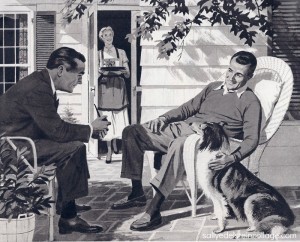
C: Hi Benny! Thank you so much for taking the time for this little chat. I know how busy you are – it’s really quite an honor. I was hoping I could ask you a few questions. Firstly, congratulations on the upcoming publication of your first book. Are you ready to call yourself an Author?
B: So nice to finally meet you. You are shorter than I imagined. Ready to call myself an author? Maybe when I actually get to hold the book in my hands, it will sink in- or more likely, when I hold the entire series of books it will feel real. Since writing is only one of many avenues I have been waltzing down over the past few years, it seems weird to claim it as my primary identity.
C: Hmmm, I see. And what would you say has been the most rewarding part of writing this book? And conversely, what has been the hardest?
B: In a way, the most rewarding and the hardest are one and the same- the world building. You nail down a few ‘rules’, things that define key aspects of how this new world operates, and those are usually the things that exited you about this idea in the first place. But that’s the equivalent of tossing a pebble in a pond- it creates ripples that intersect and move and affect everything else.
We didn’t want to take anything for granted- not even basic things like the color of the sky- but we wanted to be sure there was a logic and purpose behind every choice. It constantly brings up questions of history, biology, and physics, and often the answers that crop up necessitate key changes in the plot. It can be a frustrating rabbit hole, since you sometimes have to take several steps backwards, deconstruct something you have been working on for a long time, and rebuild it in a way that is consistent, logical, and compelling. And every move changes something else. But in the end, hopefully, you end up with a world that feels both original and credible, with weight and a pulse.
This reminds me of a story I read in elementary school. It was called “Rain Rain Go Away” by Isaac Asimov, and it was about a family who has some very strange neighbors move in next door. They are constantly fretting about the weather, always listening to forecasts on their radio, terrified of rain. I think they go on a picnic or something, and at the end of the story, they get caught in a downpour and melt, and the other family realizes their neighbors were made of sugar. And the other kids in the class all went “Whoa!” and I remember thinking “Why? Why are there sugar people? What do they want? Why do they live in secret? Are there more of them?” Of course, none of that was addressed in the story. But even at that age, I think I sensed that no creative choice really exists in a vacuum when it comes to fantasy. And sometimes the questions posed are more intriguing than the original answer. Starting now from the premise of “sugar people exist,” I think we could create a strange and fascinating world.
C: Haha! Boy, you do go on and on, don’t you? What was the first book you read where you thought to yourself, “I want to do that”?
B: I’m not sure I had that experience exactly. I think my passion was always to be a storyteller. Over the years, I’ve been an actor, animator, filmmaker- one summer I literally had a job as a storyteller at a camp- and book writing has just been the most recent opportunity to scratch that itch. I was a voracious reader as a kid- John Bellairs was a particular favorite. I think I read everything of his. Who could resist titles like “Spell of the Sorcerer’s Skull”, “Eyes of the Killer Robot,” or “The Lamp from the Warlock’s Tomb?”
And Lloyd Alexander’s “Chronicles of Prydain.” Those were huge inspirations, and filled my head with monsters and magic, and seemed to continue to exist even after I closed the books. By sixth grade, I was really into Agatha Christie and Stephen King, but I don’t think I ever imagined writing a book– except for the time when “Jaws” inspired me to write a book about an escaped lion. It was called “Terror in Tinseltown” and I never got past the title page.
But I was also hugely influenced by movies- the old Universal horror flicks had such a defined and pervasive atmosphere that I loved. And “King Kong” was the most moving story I had ever encountered. And “The Dark Crystal” both terrified and fascinated me. Those made me want to create worlds, although I wasn’t sure how to go about it.
C: Of course, of course. That’s all very interesting. And lastly, what is it like working with an unmitigated, scientifically-proven genius?
B: Aw, gee, we are out of time. Looks like the warden is here to take you back to your cell. I’ll visit again next week!
Discover more of these captivating conversations in future posts….
Q&A- Part 1
Recently, I had the opportunity to sit down with Benny Zelkowicz, co-author of the middle-grade novel THE FIRST BOOK OF ORE: THE FOUNDRY’S EDGE. Standing at 5’10″ tall with his poofy coif of curls aflutter, Benny had a sort of restless look about him, like he had a million thoughts clinking about behind those stylish, photochromic eyeglasses. But he was generous enough to speak with me, and I’d like to share with you our exchange.
C: Hi Benny! Thank you so much for taking the time for this little chat. I know how busy you are – it’s really quite an honor. I was hoping I could ask you a few questions. Firstly, congratulations on the upcoming publication of your first book. Are you ready to call yourself an Author?
B: So nice to finally meet you. You are shorter than I imagined. Ready to call myself an author? Maybe when I actually get to hold the book in my hands, it will sink in- or more likely, when I hold the entire series of books it will feel real. Since writing is only one of many avenues I have been waltzing down over the past few years, it seems weird to claim it as my primary identity.
C: Hmmm, I see. And what would you say has been the most rewarding part of writing this book? And conversely, what has been the hardest?
B: In a way, the most rewarding and the hardest are one and the same- the world building. You nail down a few ‘rules’, things that define key aspects of how this new world operates, and those are usually the things that exited you about this idea in the first place. But that’s the equivalent of tossing a pebble in a pond- it creates ripples that intersect and move and affect everything else.
We didn’t want to take anything for granted- not even basic things like the color of the sky- but we wanted to be sure there was a logic and purpose behind every choice. It constantly brings up questions of history, biology, and physics, and often the answers that crop up necessitate key changes in the plot. It can be a frustrating rabbit hole, since you sometimes have to take several steps backwards, deconstruct something you have been working on for a long time, and rebuild it in a way that is consistent, logical, and compelling. And every move changes something else. But in the end, hopefully, you end up with a world that feels both original and credible, with weight and a pulse.
This reminds me of a story I read in elementary school. It was called “Rain Rain Go Away” by Isaac Asimov, and it was about a family who has some very strange neighbors move in next door. They are constantly fretting about the weather, always listening to forecasts on their radio, terrified of rain. I think they go on a picnic or something, and at the end of the story, they get caught in a downpour and melt, and the other family realizes their neighbors were made of sugar. And the other kids in the class all went “Whoa!” and I remember thinking “Why? Why are there sugar people? What do they want? Why do they live in secret? Are there more of them?” Of course, none of that was addressed in the story. But even at that age, I think I sensed that no creative choice really exists in a vacuum when it comes to fantasy. And sometimes the questions posed are more intriguing than the original answer. Starting now from the premise of “sugar people exist,” I think we could create a strange and fascinating world.
C: Haha! Boy, you do go on and on, don’t you? What was the first book you read where you thought to yourself, “I want to do that”?
B: I’m not sure I had that experience exactly. I think my passion was always to be a storyteller. Over the years, I’ve been an actor, animator, filmmaker- one summer I literally had a job as a storyteller at a camp- and book writing has just been the most recent opportunity to scratch that itch. I was a voracious reader as a kid- John Bellairs was a particular favorite. I think I read everything of his. Who could resist titles like “Spell of the Sorcerer’s Skull”, “Eyes of the Killer Robot,” or “The Lamp from the Warlock’s Tomb?”
And Lloyd Alexander’s “Chronicles of Prydain.” Those were huge inspirations, and filled my head with monsters and magic, and seemed to continue to exist even after I closed the books. By sixth grade, I was really into Agatha Christie and Stephen King, but I don’t think I ever imagined writing a book– except for the time when “Jaws” inspired me to write a book about an escaped lion. It was called “Terror in Tinseltown” and I never got past the title page.
But I was also hugely influenced by movies- the old Universal horror flicks had such a defined and pervasive atmosphere that I loved. And “King Kong” was the most moving story I had ever encountered. And “The Dark Crystal” both terrified and fascinated me. Those made me want to create worlds, although I wasn’t sure how to go about it.
C: Of course, of course. That’s all very interesting. And lastly, what is it like working with an unmitigated, scientifically-proven genius?
B: Aw, gee, we are out of time. Looks like the warden is here to take you back to your cell. I’ll visit again next week!
Discover more of these captivating conversations in future posts….
December 17, 2013
And if you are so inclined, follow us on Twitter @camandbenny to get even more of our insightful, blathering nonsense.
The Galley
It has arrived – the first bound copy of our very first book! It’s a weird, quivery sensation to know that so much work, so many years and sleepless nights you can just suddenly hold in your hand. Or you can use it as a coaster. Or your daughter can throw up on it. Our lives since March of 2011 are now officially contained in a singular object. Crazy. The galley is the first pass on the bound book. This, of course, is without the final jacket artwork, but the logo and graphic design are top notch, thanks to Marci Senders at Disney-Hyperion. We have read the book through and through too many times to count, but it still somehow takes on a new life when it is “a book.” Then it will suddenly become surreal when it is an actual final booky-book. Can’t even imagine that feeling quite yet. So for now, we are content –
November 16, 2013
The Big Reveal…
Lots of people have been asking us, “So what is your book about?” Up until now, we’ve been keeping mum. But no more! Here is a brief summary: In opulent Albright City, twelve-year-old Phoebe Plumm leads a reclusive life of luxury, concocting sly pranks to torment her rowdy servant boy, Micah. The illustrious Dr. Jules Plumm is her father and only friend, but because of his work at The Foundry, a global corporation with a monopoly on technology, she rarely gets to see him. Then one fateful night, Dr. Plumm is brutally abducted. Phoebe and an uninvited Micah risk everything on a daring rescue, pursuing her father down a mysterious train tunnel and into a land unknown. The kids find themselves stranded in a world of living metal, intruders in a majestic yet fearsome realm and fugitives of the all-powerful Foundry. Pampered Phoebe and would-be hero Micah must learn to trust each other if they hope to survive. But as the unlikely pair get closer to Dr. Plumm, they will unearth the tie that binds their world to this one, a sinister secret that could change everything. Oh, and it’s official. “The First Book of Ore: The Foundry’s Edge” comes out in April 2014!
October 27, 2013
Announcing…
Hi everybody! Indeed, we have been tight-lipped on some of our book updates, but its entirely out of necessity. Elements change so frequently with this project, we try to not start blabbering until we feel the information is as locked and reliable as it can possibly be. The being said, we’d like to announce the title of the first book of our trilogy: “THE FIRST BOOK OF ORE: THE FOUNDRY’S EDGE” Our book is currently set to be released in the spring 2014. We couldn’t be more proud of the work we have done with our publisher, and we are chomping at the bit to get it into people’s hands. So there you have it – a name for the thing that has so thoroughly taken over our lives. Thank you everyone for your continued love, support, and interest!
September 13, 2013
Packaging
We’ve picked up thousands of books throughout our lives and can honestly say we have never given much thought to the extensive decision-making involved in designing a novel. Sure, we’ve thought about cover art, but how about the particular shade of white of the paper? Or the kerning of the font on the type-set page? Then there are endpapers, title pages, chapter headings, section breaks, margin design elements, and dust jackets, and case covers, and so on and so forth.
Though we aren’t directly involved in much of the book design process, the team over at Disney-Hyperion has been great about running things by us and picking our brains. So far, we have seen a mock-up of the cover and some sample pages, and we have to say––we are blown away! There is a tremendous amount of attention is being paid to every detail. The end result is sure to deliver on our shared ambitions: to make the package of the book truly unique in order to properly reflect the story. We aspire to create a beautiful object that visually conveys something about the world in every single design choice. It’s pretty awe-inspiring to watch this project we invested SO much into become a real book, and then blossom into even more than just the words we have been painstakingly poring over for years.





